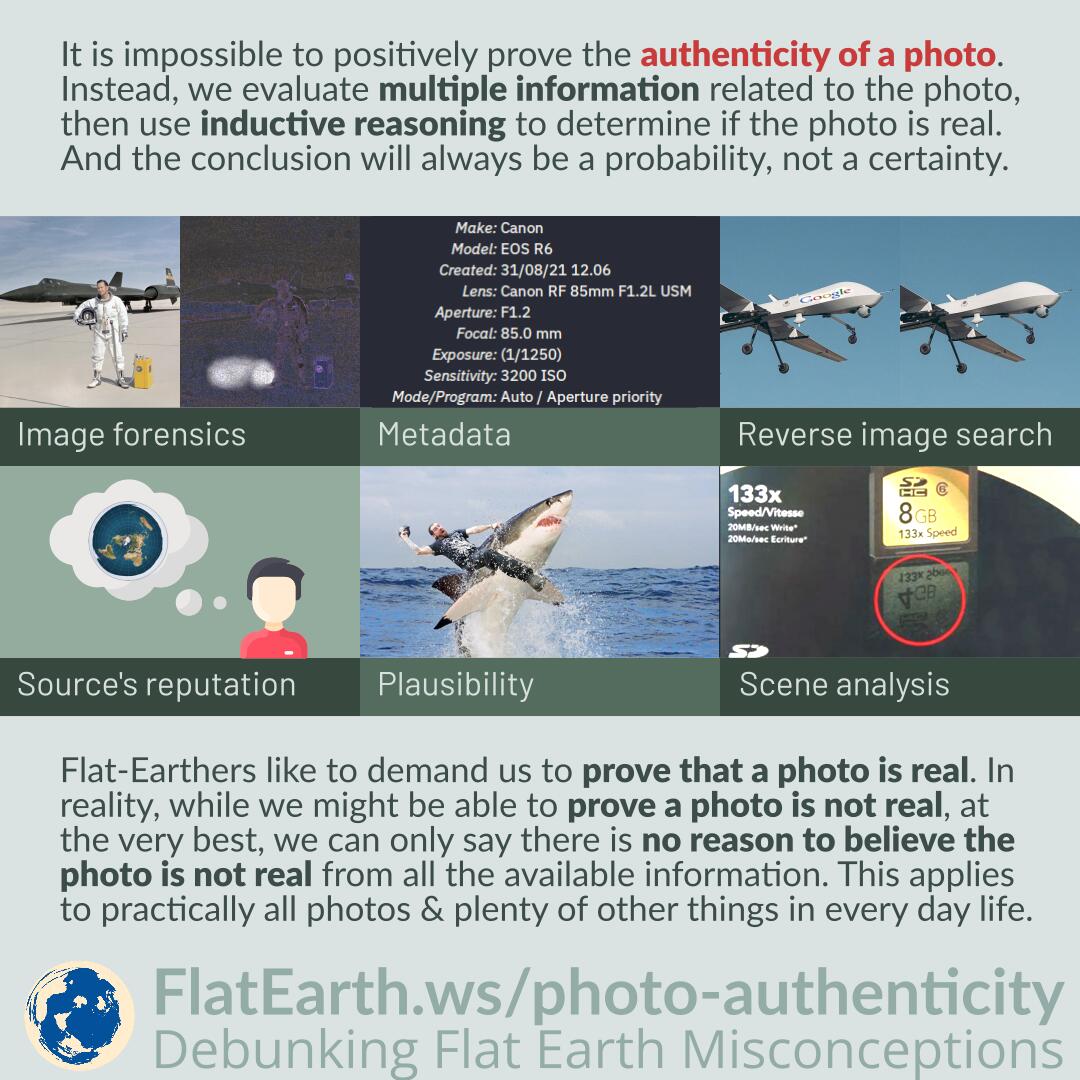It is impossible to positively prove the authenticity of a photo beyond any doubt unless we take the photos ourselves. Instead, we gather as much information as possible related to the photo, evaluate the information, then use inductive reasoning to determine if the photo is real. And the conclusion will always be a probability, not a certainty.
Flat-Earthers like to demand us to prove that a particular photo is real, and if we cannot, they will conclude the photo is fake. In reality, while we might be able to prove a photo is not real, at the very best, we can only say there is no reason to believe the photo is not real from all the available information. This applies to practically all photos and also plenty of other things in everyday life.
These are some of the information we can gather about a photo to determine if it is real:
- Image forensics: Change levels & curves to find hints of cloning. Use ELA to determine the difference of image degradation in different parts of the image.
- Metadata analysis: Look for the image’s date from HTTP headers. Find out if the EXIF metadata exists, check for times, camera & lens, exposure settings, GPS information, etc. and see if everything checks out.
- Reverse image search: Use Google Image Search, TinEye, or similar tools to search for similar images on the Internet.
- Scene analysis: Find discrepancies between light sources and shadows. Use common sense to find things out of place.
- Source of the photo: Find the source of the image. Is the source of the image identifiable? Check if they are trustworthy.
- Scene plausibility: Is the event in the picture possible? Has it occurred before? Are there other sources that can corroborate the event’s occurrence?
- Appeal to emotion: Do the image and the accompanying information make us emotional? If so, then it deserves more scrutiny before we can regard it as real.
- Weather & astronomy: Verify the weather using sites like weather.com. Verify the positions of astronomical bodies like the Sun & the Moon using an app like Stellarium.
- Fact-checkers: Check with sites like Snopes or other fact-checkers. Viral images are usually already addressed.
And last but not least, just because a photo is fake does not mean the things depicted in the photo are also fake.
Reference
- Hurricane Sandy: Five ways to spot a fake photograph – BBC
- Fauxtoshop: Spotting fake photos – Theresa Collington
- 13 online tools that help to verify the authenticity of a photo – Stop Fake
- Fake Photo Or Real? Check If An Image Is Morphed Or Edited? – Electrons.co


